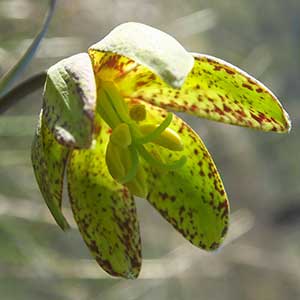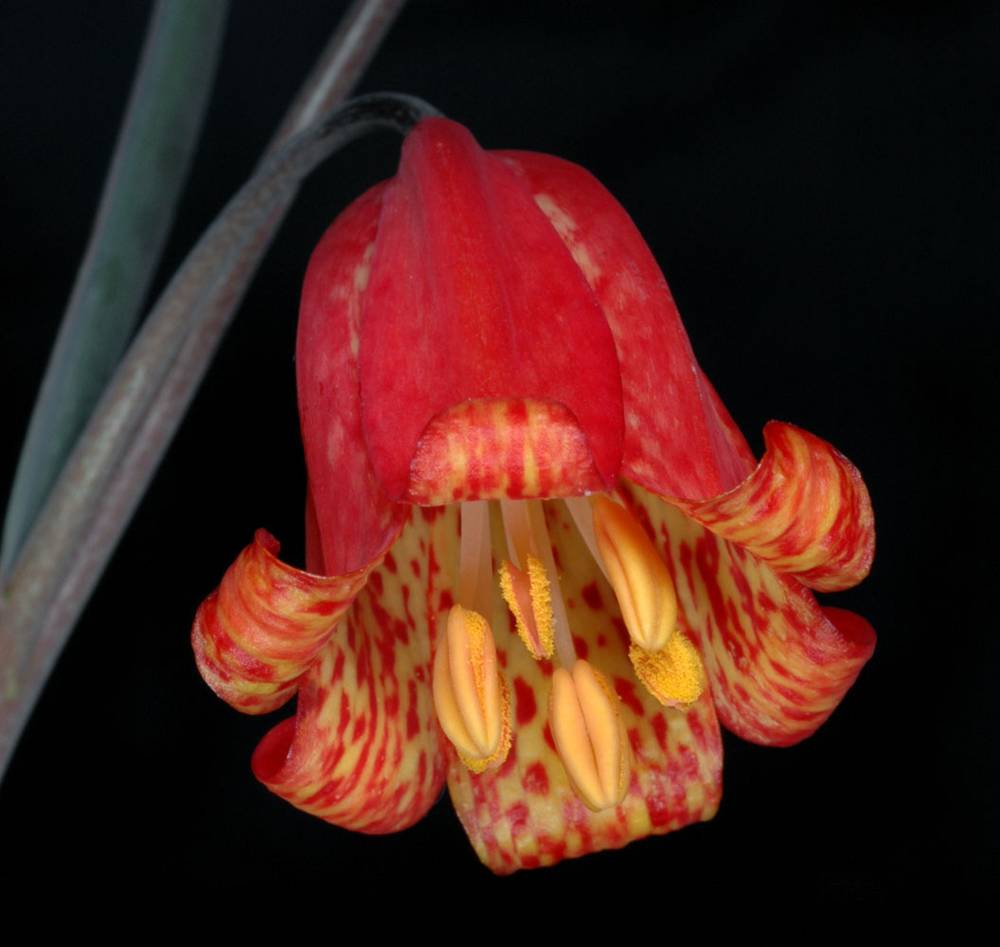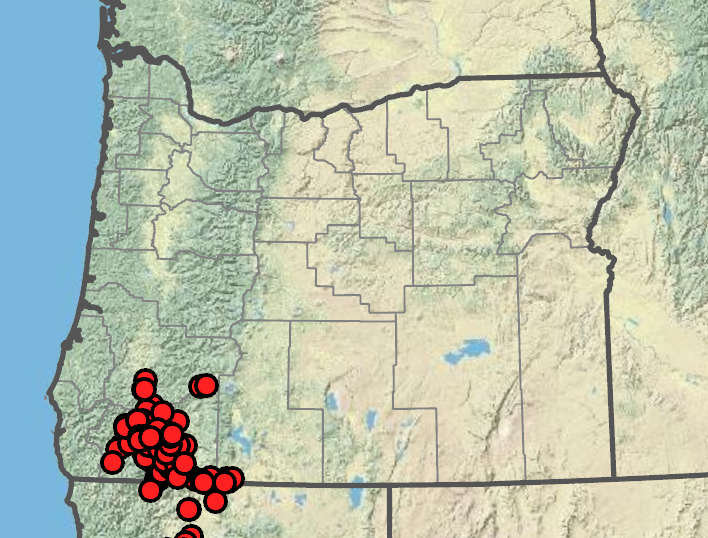Fritillaria glauca
Fritillaria recurva
Siskiyou fritillary
scarlet fritillary
5–20 cm.
20–70 cm.
1–4(6), alternate, 3–11 cm long;
blades lance-ovate, sickleshaped, strongly glaucous.
in 1–3 whorls of 2–5 leaves per node or alternate, 3–10(15)cm long;
blades linear to narrowly lanceolate.
cupshaped;
perianth segments oblanceolate to oblong, 1.5–2(2.5) cm long, yellow with purple mottling to purple with yellow mottling;
apex not recurved;
nectaries broad-lanceolate, 25-33% perianth segment length;
style branched for 50% its length.
perianth segments oblong to oblanceolate, 2–4 cm long, red to burgundy with checkered yellow mottling within and purple mottling without;
apex strongly recurved;
nectaries narrowly lanceolate; up to 25% of perianth segment length;
style branched for 25– 50% its length.
capsules winged.
capsules winged.
=24.
=24, 36.
Fritillaria glauca
Fritillaria recurva
Serpentine and non-serpentine gravelly slopes. Flowering Mar–Jun. 400–2100m. Casc, Sisk. CA. Native.
Fritillaria glauca is our only species that grows in serpentine soils. This species also grows in non-serpentine habitats. This begs the question: Was F. glauca historically a serpentine or non-serpentine endemic? The sickle-shaped and strongly glaucous leaves of F. glauca are distinct among Oregon fritillaries.
Dry open woods and scrubland. Flowering Mar–May. 200– 1500m. Casc, ECas, Sisk. CA, NV. Native.
Fritillaria recurva and F. micrantha are hypothesized by some authorities to be the parental species of F. eastwoodiae (McFarlane 1978). More study is needed.
Stephen Meyers
Stephen Meyers





